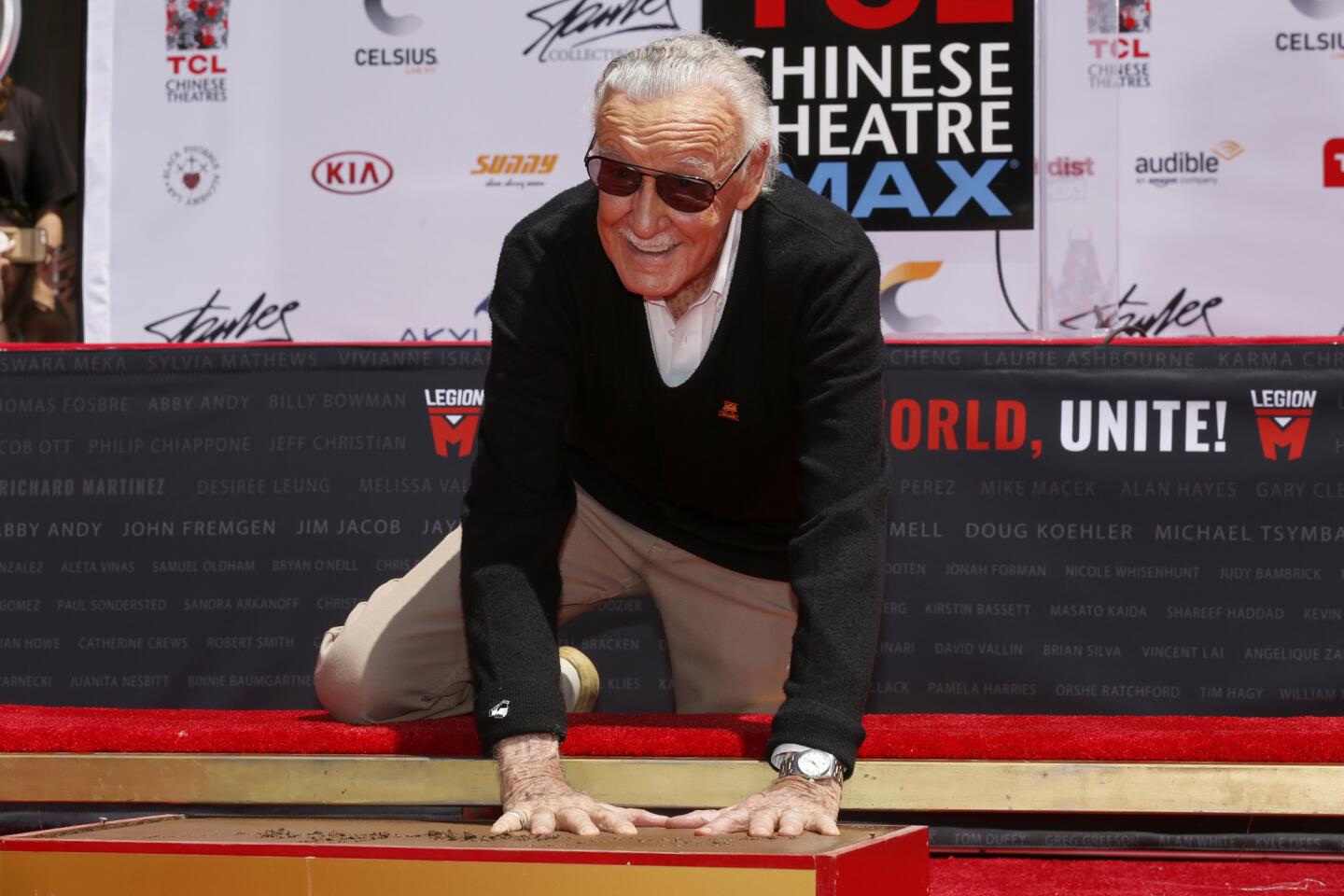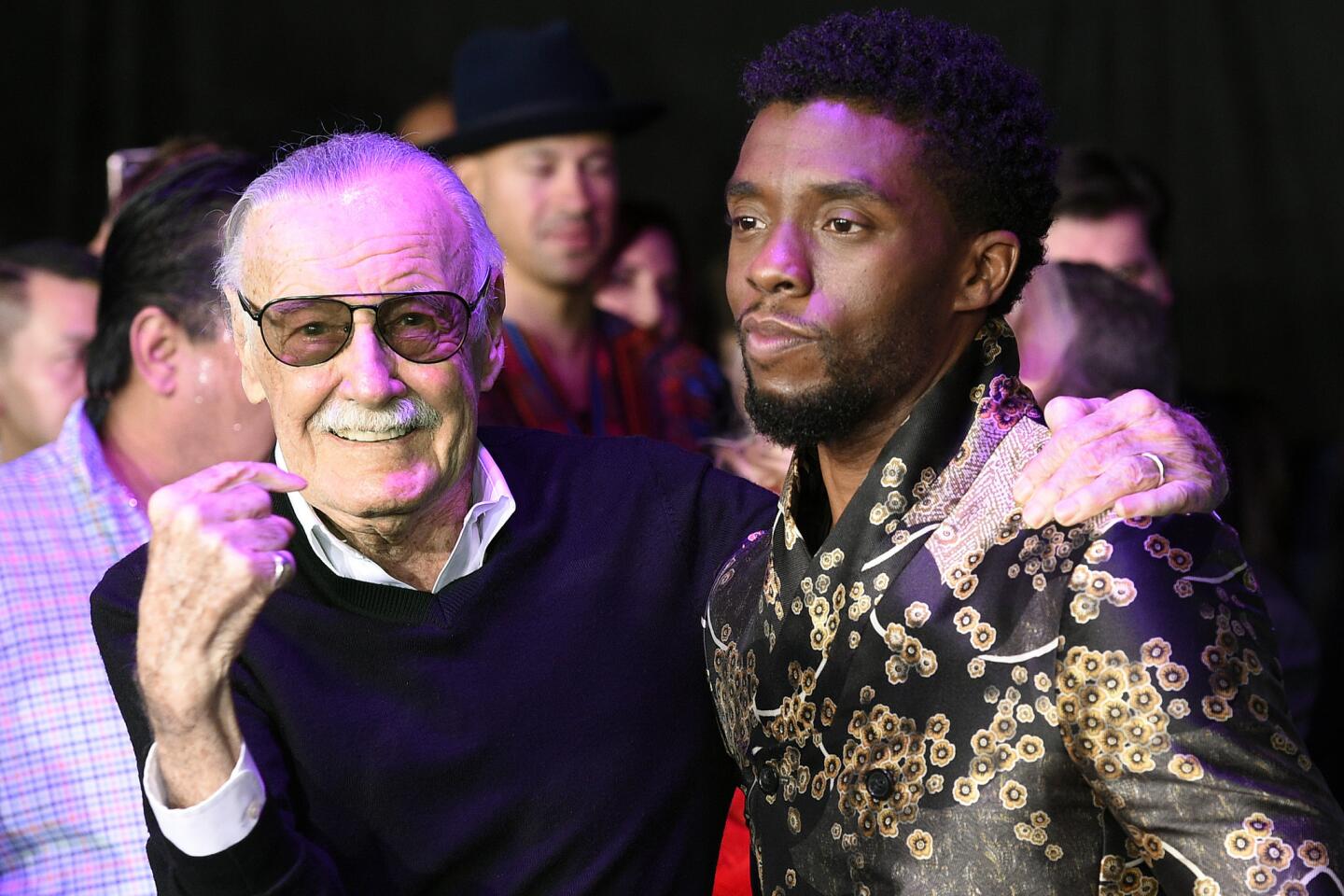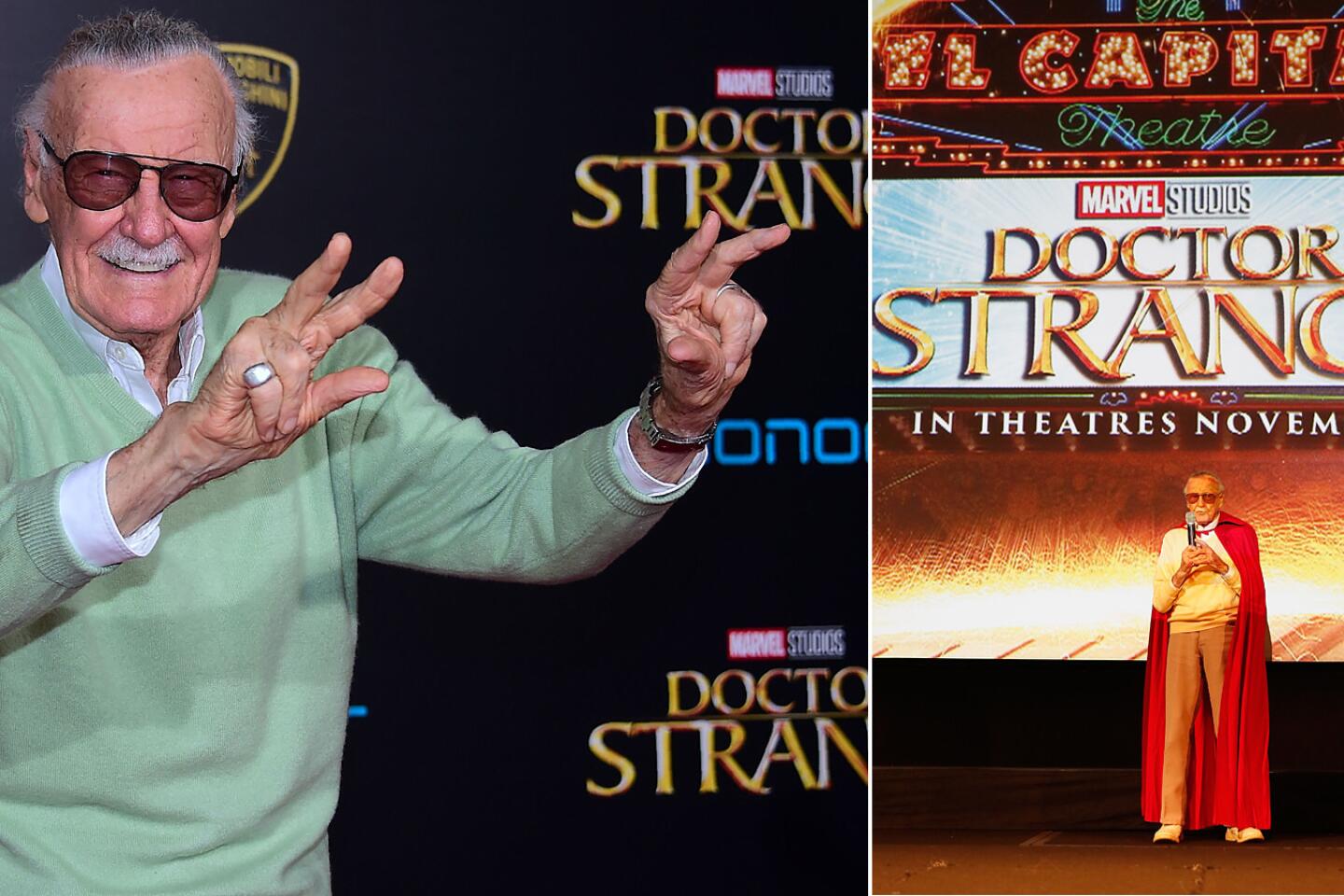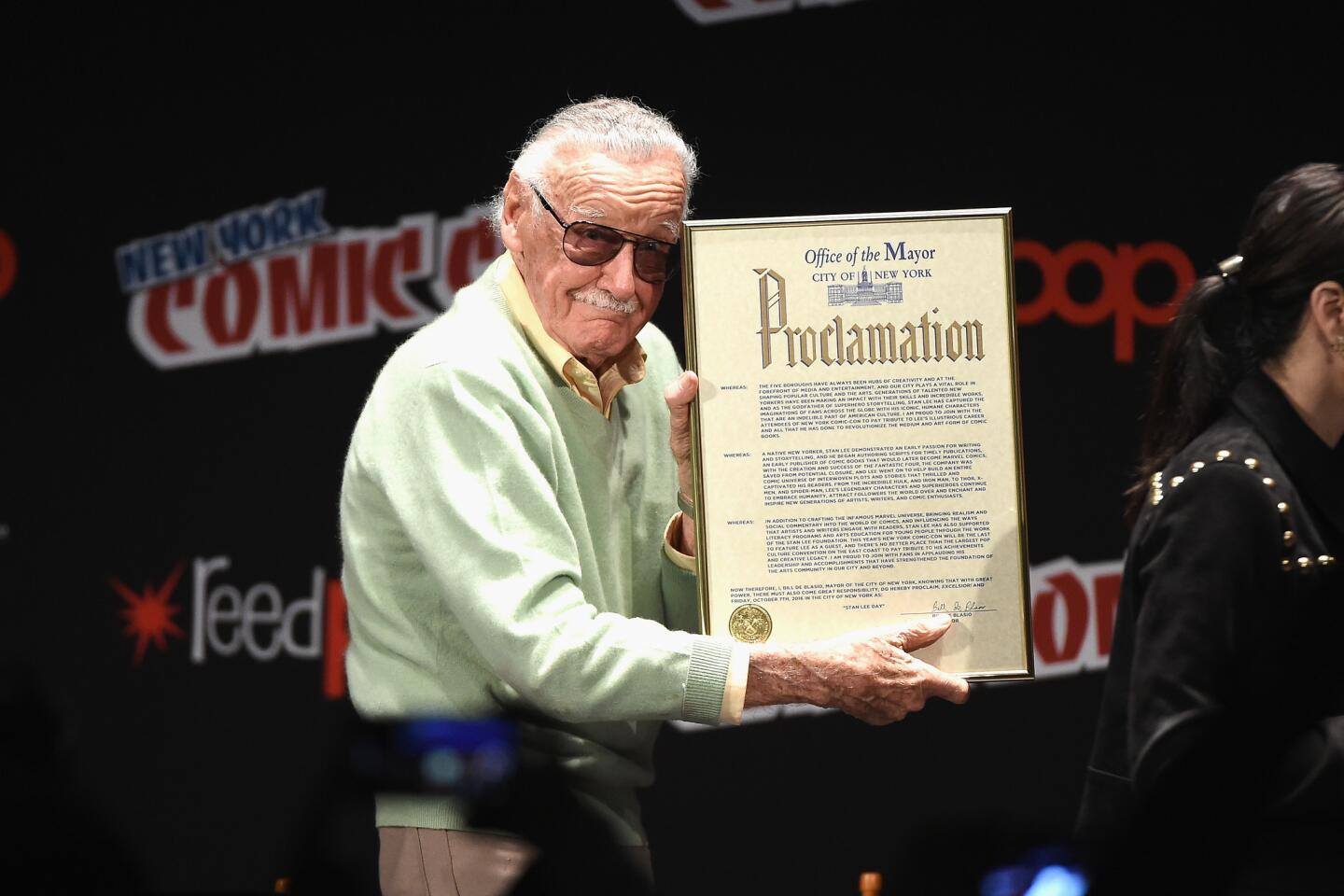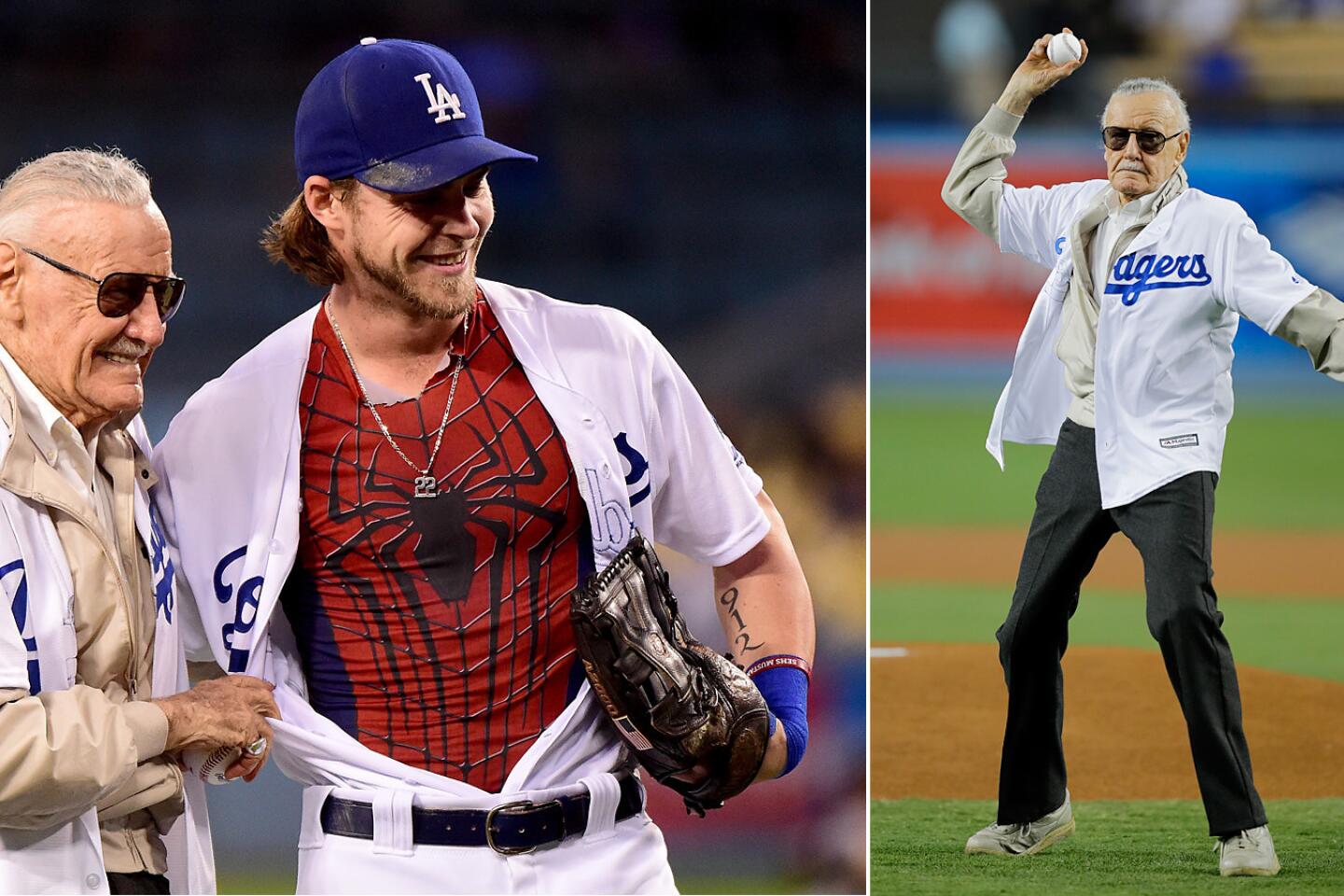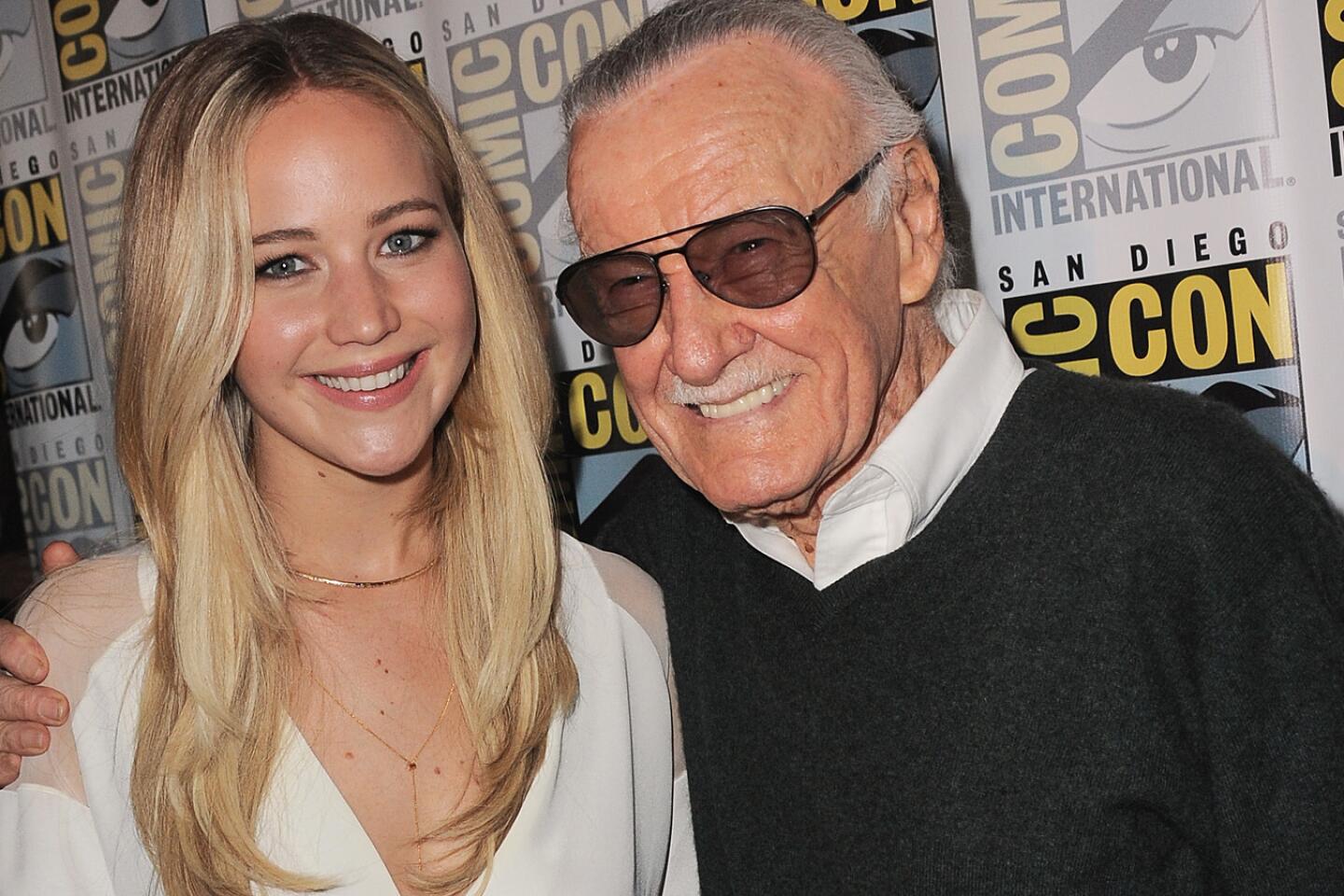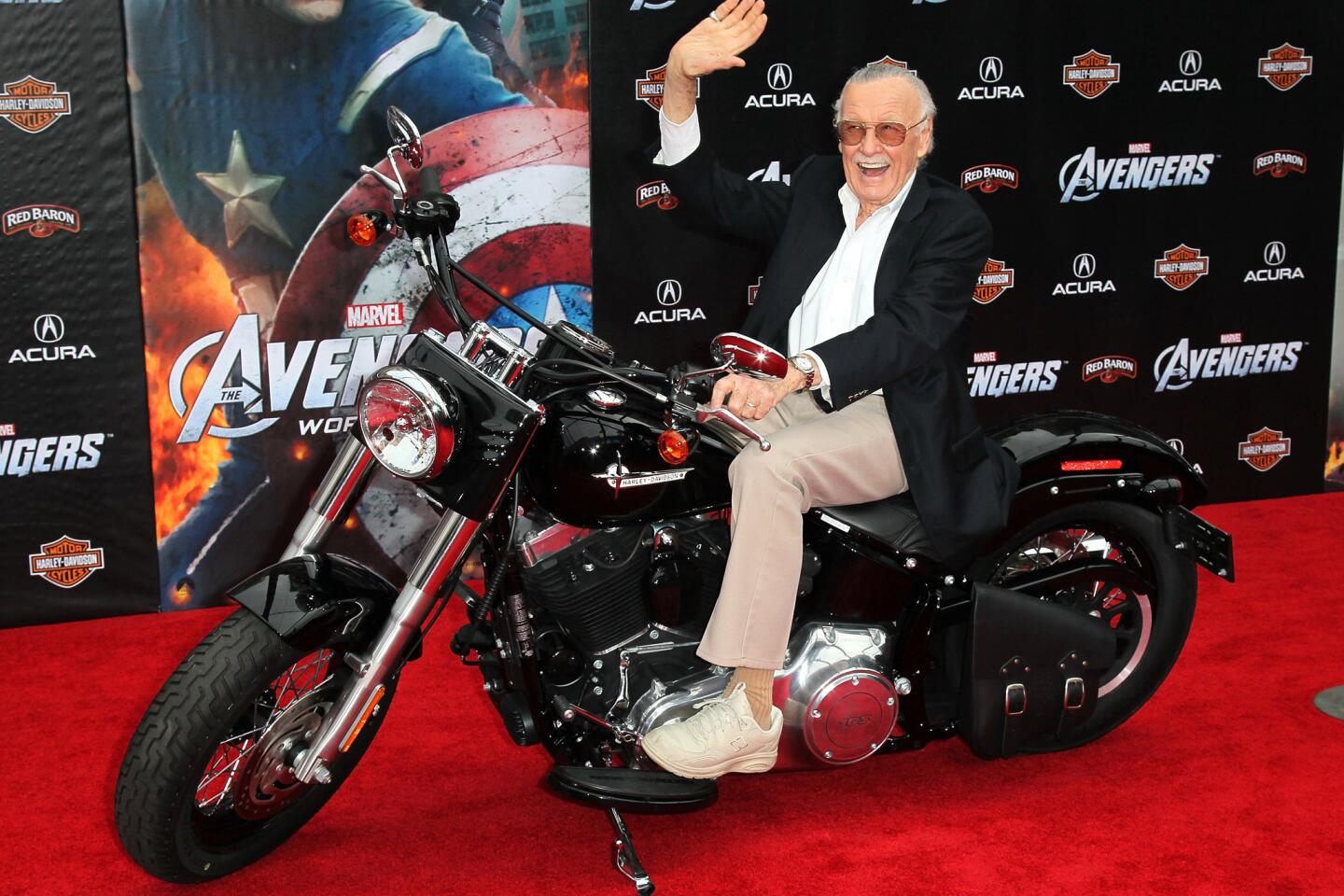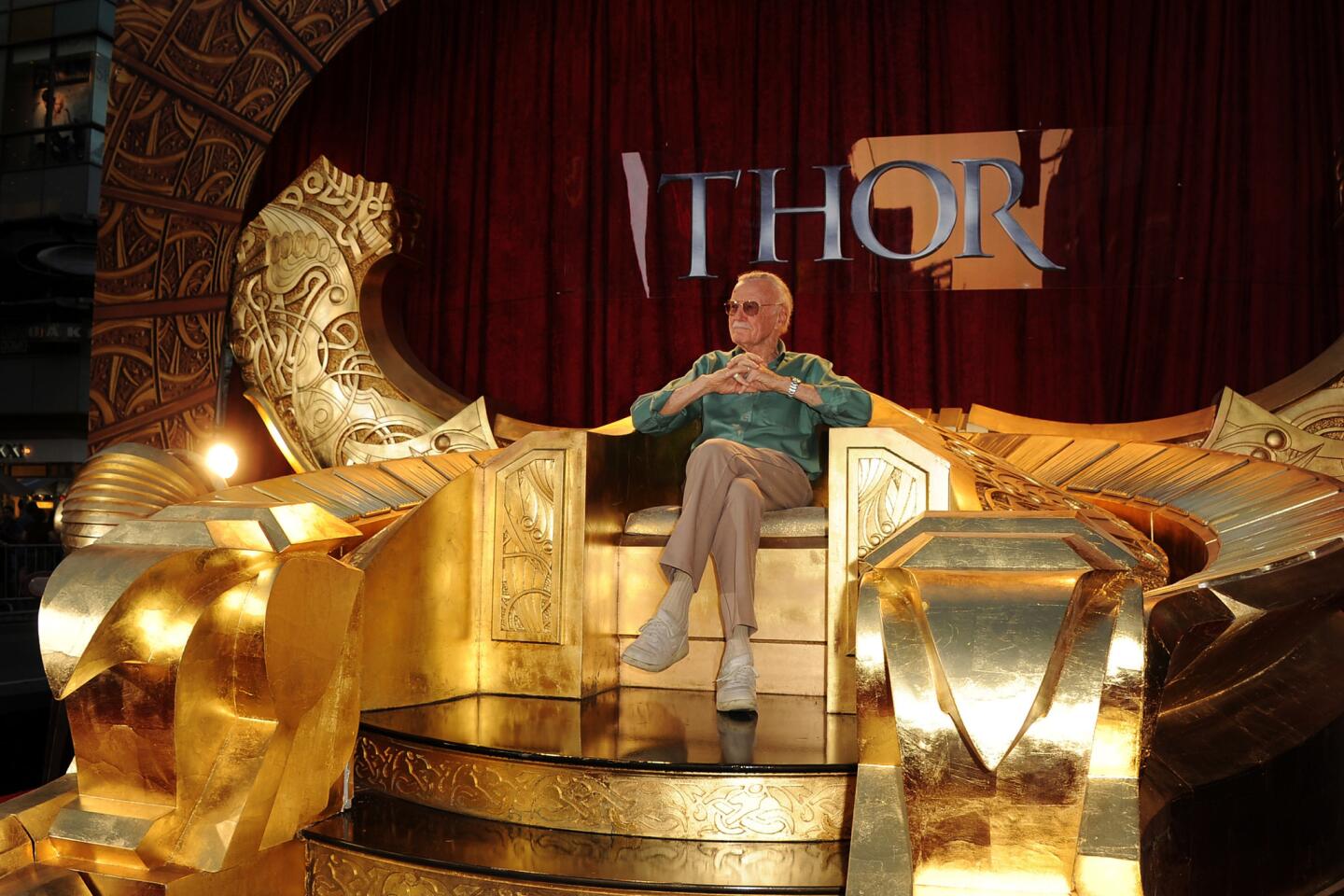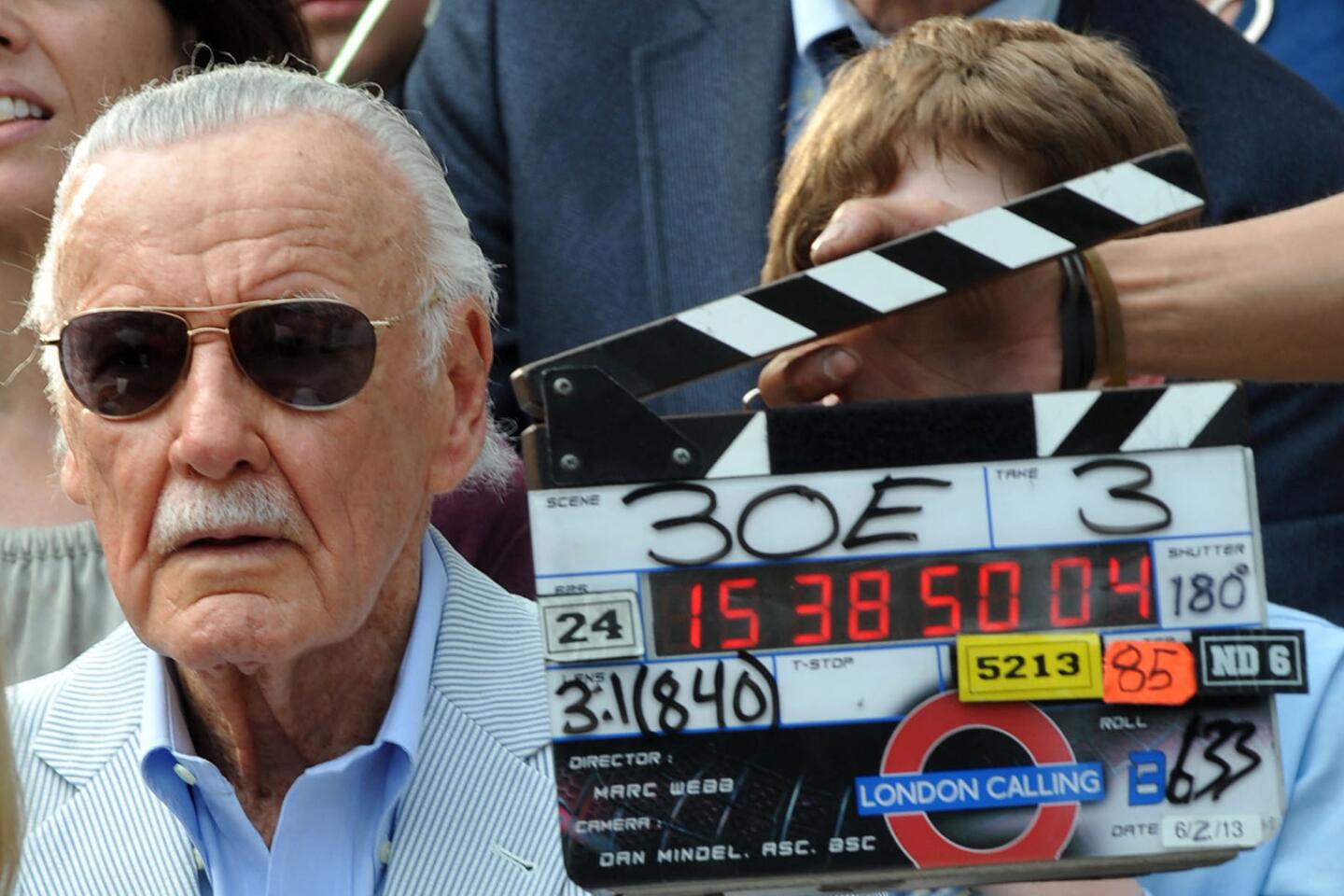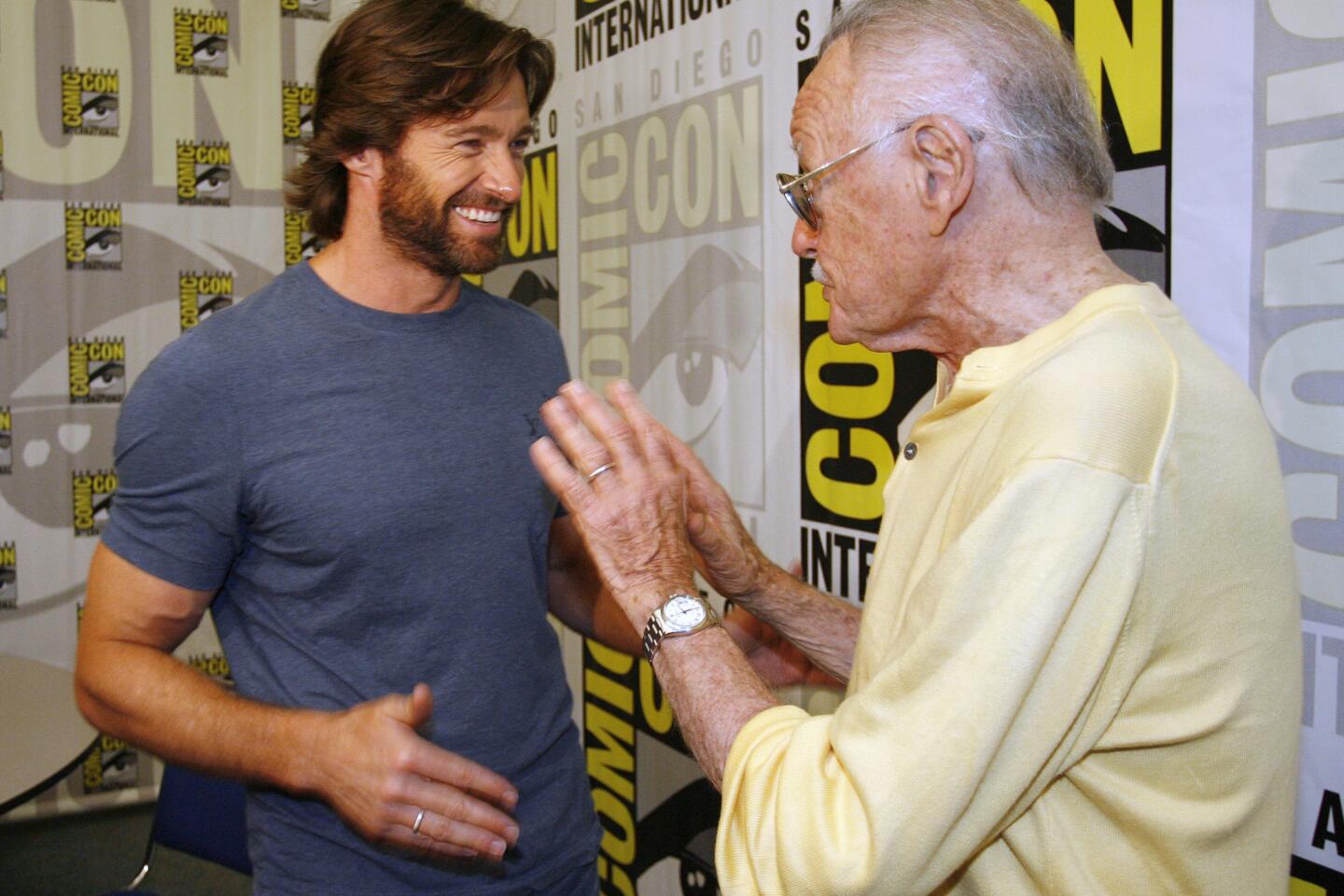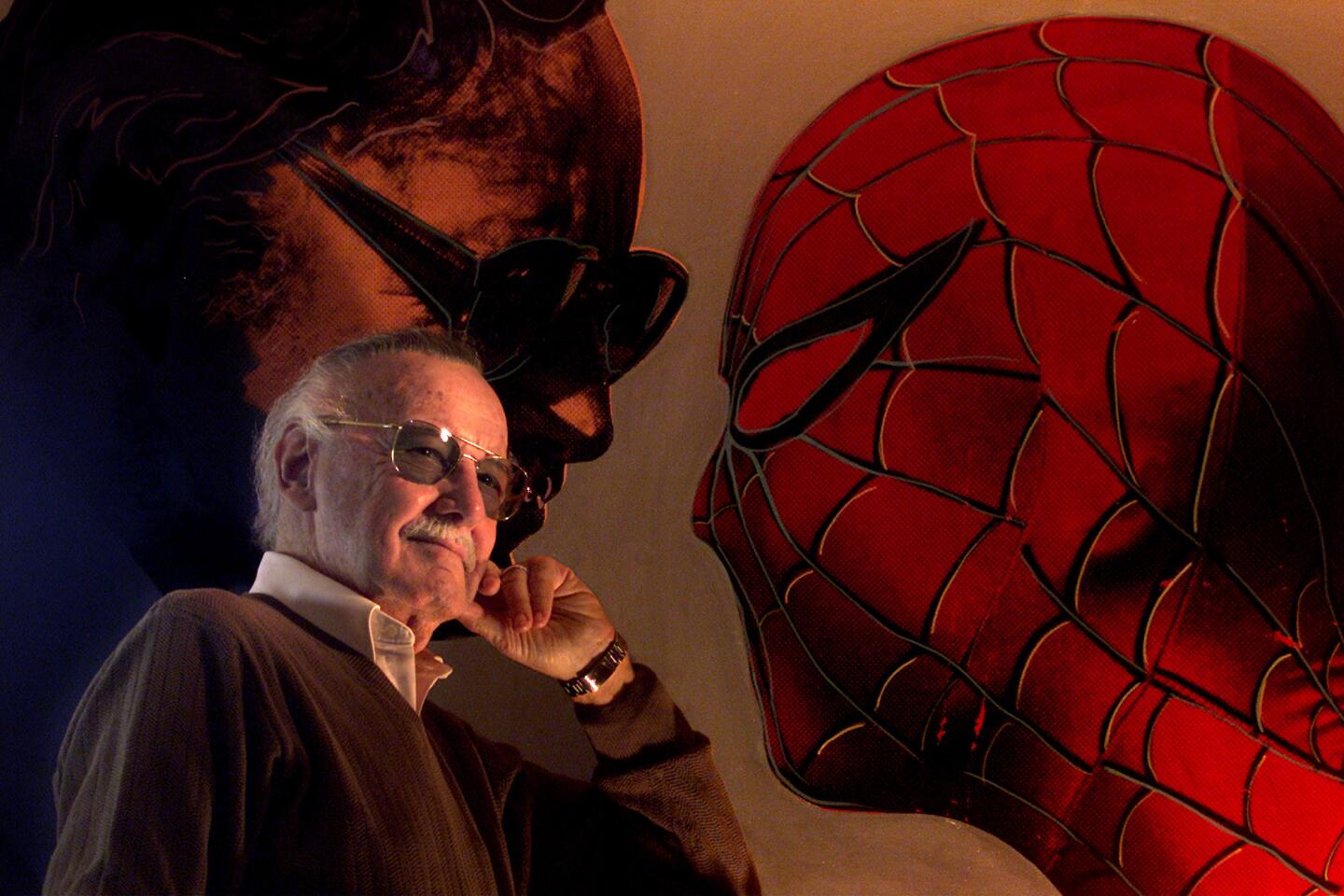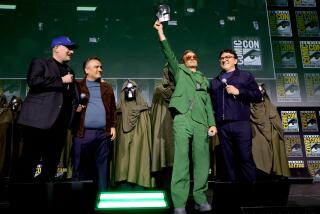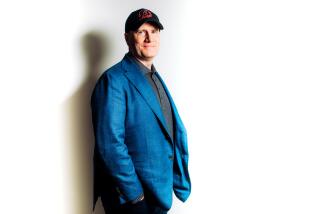Three ways Stan Lee helped create the modern superhero movie
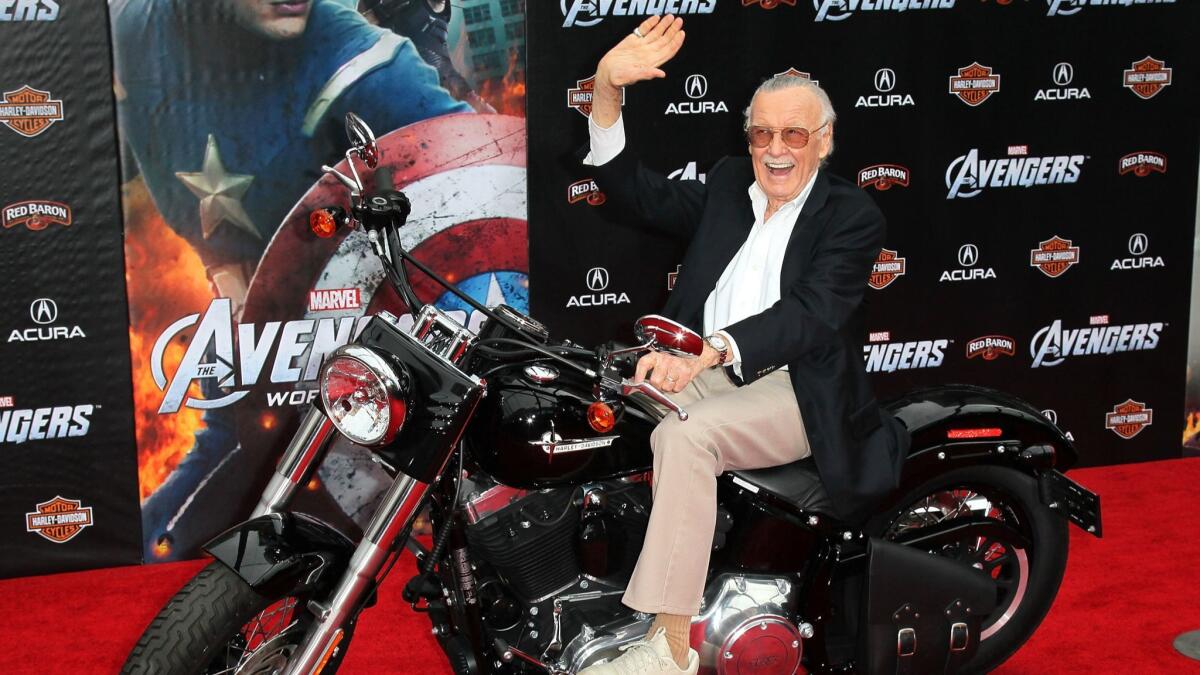
- Share via
By the time the Marvel Cinematic Universe experienced its Big Bang with the 2008 smash “Iron Man,” Stan Lee had long since retired from official duties at Marvel, settling into a role as a revered spiritual grandfather to the comic book world, as close to a flesh-and-blood superhero as fans could hope to get.
But though Lee was no longer actively involved in steering the panoply of characters he had helped create — including Spider-Man, the X-Men, the Hulk, Black Panther, Thor and the Fantastic Four — his legacy as a key architect of what would quickly become Hollywood’s dominant genre was already firmly established.
In the decade since “Iron Man,” Marvel Studios movies, most of which feature Lee’s co-creations, have collectively grossed more than $17 billion worldwide for the Walt Disney Co. — and that’s not counting the additional billions brought in over the years by the Spider-Man and X-Men franchises at Sony Pictures and 20th Century Fox, respectively.
RELATED: Comic-book legend Stan Lee, co-creator of Spider-Man and Marvel heroes, dies at 95 »
“Thank God for Stan Lee creating this universe and these amazing characters,” David Maisel, former chairman of Marvel Studios, told The Times on Monday, as news of Lee’s death at age 95 reverberated around the world. “Without him, there would have been nothing for us to put on the screen.”
Here are three ways Lee helped write the playbook for the modern superhero movie — and, by extension, re-shaped the film industry as a whole.
1. He made superheroes relatable.
Until Lee came along, superheroes had generally been much more like Olympian deities than regular people with regular-human problems. But, starting in the 1960s with Fantastic Four, Spider-Man and the Hulk, Lee and co-creators Jack Kirby and Steve Ditko saw a way to draw in fans with characters who, for all their powers, were plagued by the same flaws, neuroses, relationship issues and everyday headaches that beset all of us.
As Lee told The Times in 1984, “I thought, suppose there was a guy, Peter Parker, who’s also Spider-Man and he can stick to walls, and spin a web, and has the strength of 12 men. We said just because he can do that doesn’t mean everything would be perfect in his life. We created the first superheroes who weren’t perfect, who worried about paying rent. It was satire — fantasy in a realistic setting.”
Lee’s superheroes lived in the same world as the rest of us, complete with all of its social ills, and their foibles made it that much easier for fans to connect to them. That more naturalistic approach to character — and the wryly comic sensibility Lee brought to it — has continued to shape not only Marvel’s films but also franchises like “The Incredibles.” And even, it could be argued, comedies that have nothing to do with capes or spandex.
As Seth Rogen wrote on Twitter on Monday, “Thank you Stan Lee for making people who feel different realize they are special.”
2. He perfected the concept of the shared universe.
Lee didn’t single-handedly create the concept of different characters inhabiting the same world; Disney had its own shared animated Mickey Mouse universe dating to the 1920s, while Universal Studios monsters like Frankenstein and the Wolf Man would periodically pop up in one another’s films. But before Lee came along, comic book characters had, for the most part, been isolated in their own narratives (with the notable exception of DC Comics’ Justice League series uniting Batman, Superman, Wonder Woman and other heroes for a specific set of stories).
Having established that Marvel’s superheroes primarily lived in our world — many of them in Lee’s native New York — it only made sense to Lee that they would sometimes bump into each other around the neighborhood. Under his stewardship, Marvel created a sprawling set of interconnected narratives in which one character’s storyline could impact another’s and superheroes could team up to fight a common enemy — or, just as often, squabble with one another.
RELATED: An illustrated tribute to Stan Lee and his career »
Mary Ann Halford, a New York-based media and entertainment strategist at OC&C Consulting, said Lee’s ability to build out an overlapping tapestry of stories with the comics laid the groundwork for Marvel Studios’ successful run of films. That business model has become the driving force of not only the box office but the small screen as well, and has been copied, with varying degrees of success, by other studios — most notably, Warner Bros. with its DC Comics films.
“He was able to build interconnectedness with the comic books and the characters, and that laid a web, if you will, for the films,” she said. Disney will continue to benefit from that foresight with its upcoming roster of films, including the March release “Captain Marvel” and May’s “Avengers” sequel. Its universe is about to get bigger after Disney brings “X-Men” characters, including Wolverine and Deadpool, into its fold after its $71.3 billion deal to buy Fox, which produces the “X-Men” movies. “There’s still going to be a tremendous amount of value, and his legacy will live on.”
3. He was a master of fan connection.
No one worked more tirelessly to cultivate fans than Lee, who was as brilliant at marketing and promotion as he was at creating indelible characters. Under Lee’s leadership, Marvel Comics readers became intimately familiar with the company’s artists and writers, and throughout the ’60s, Lee wrote a monthly column called “Stan’s Soapbox,” which he’d often sign with his personal motto, “Excelsior!”
By the time Hollywood started cranking out films based on Marvel characters, comic book fans felt so connected to Lee that he became a kind of living, breathing symbol of fandom itself. Lee would go on to make cameo appearances in dozens of films (he will be seen later this month, in animated form, in Disney’s “Ralph Breaks the Internet”) and showed up at countless fan conventions like Comic-Con, treating fans like friends he just hadn’t met yet.
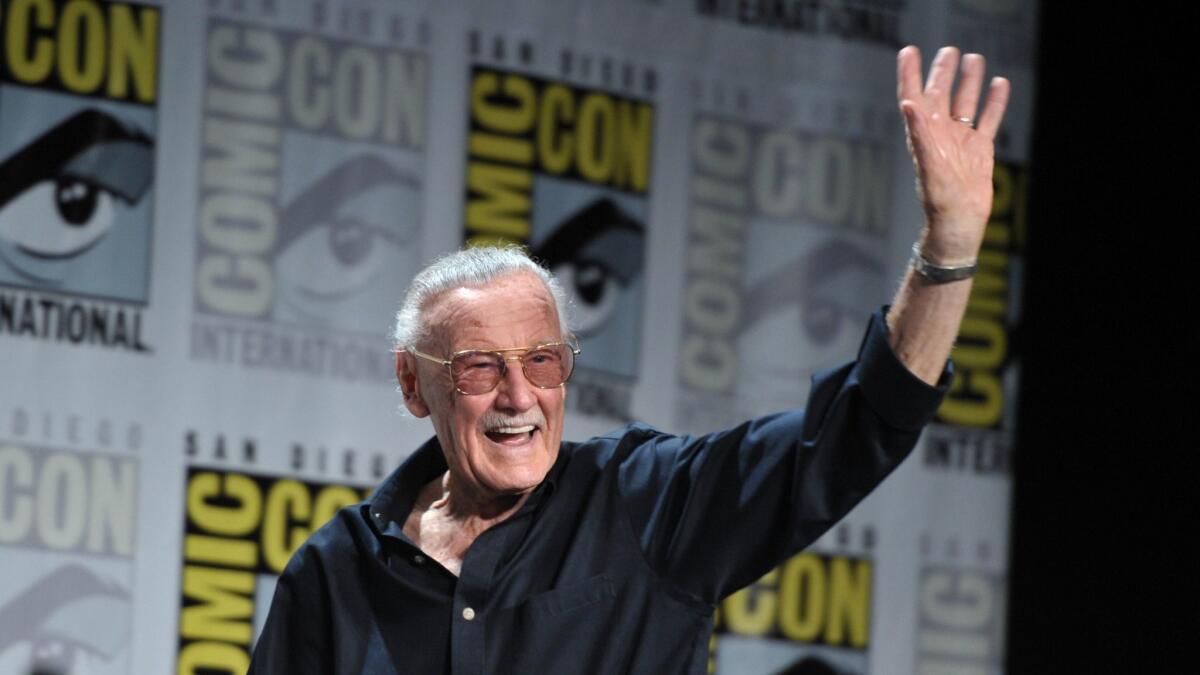
RELATED: The wisdom and wisecracks of Stan Lee: What he told The Times over the years »
To this day, Lee’s talent for nurturing Marvel’s fan base has become a model for every studio marketing department when it comes to managing their own franchises, superhero or otherwise.
In an interview with The Times in 2012, Lee drove home the importance of maintaining that direct connection with fans. For him, it wasn’t simply about making them feel good; it was a critical component in maintaining his success.
“I’ve been in this business so long dealing with fans that I can really, after launching anything, I can tell within a couple of days of receiving the fan mail and fan emails whether or not we’re on the right track,” he said.
Twitter: @joshrottenberg
More to Read
Only good movies
Get the Indie Focus newsletter, Mark Olsen's weekly guide to the world of cinema.
You may occasionally receive promotional content from the Los Angeles Times.

